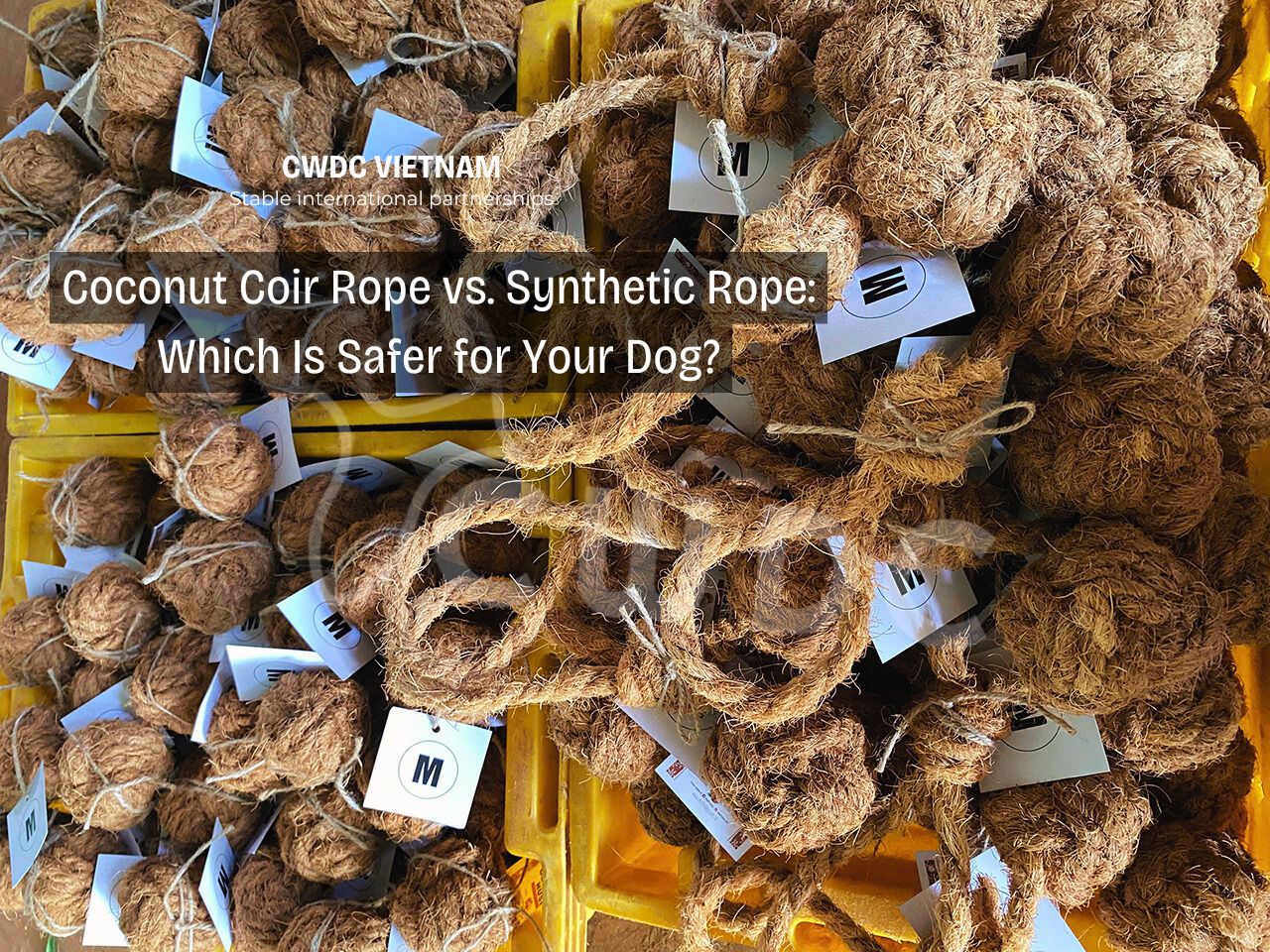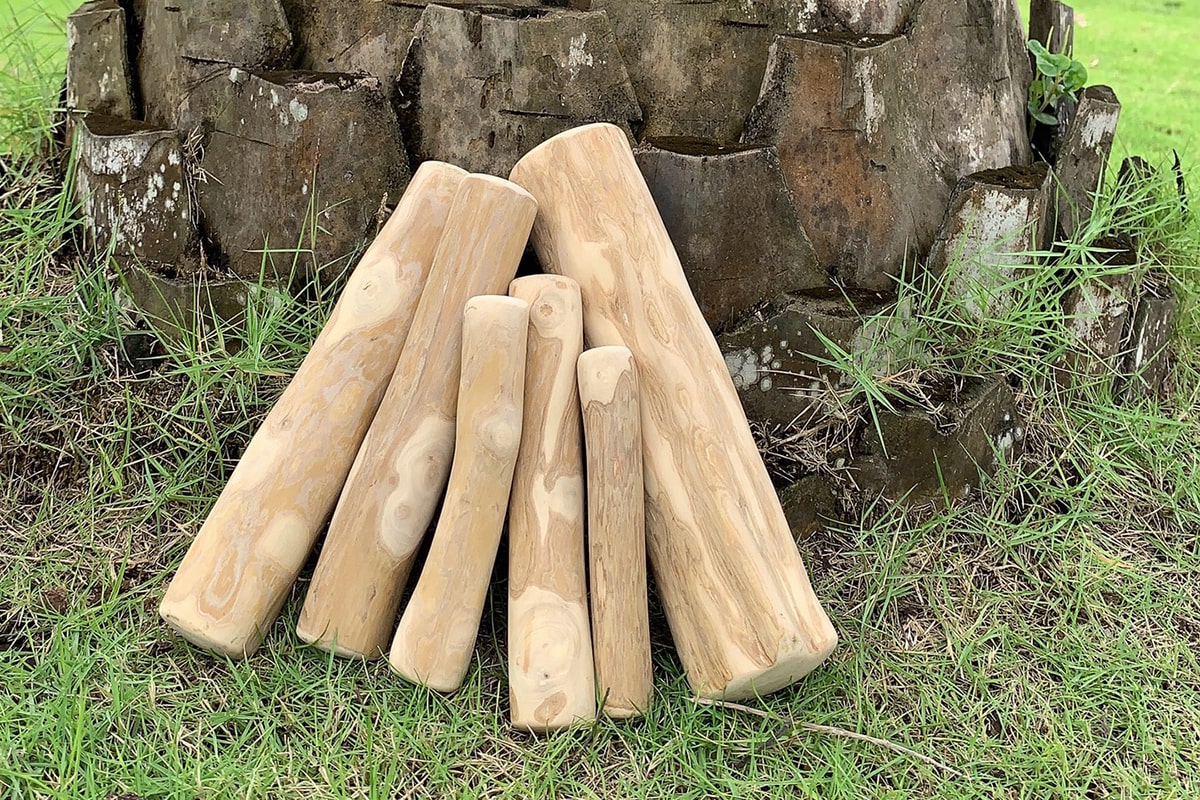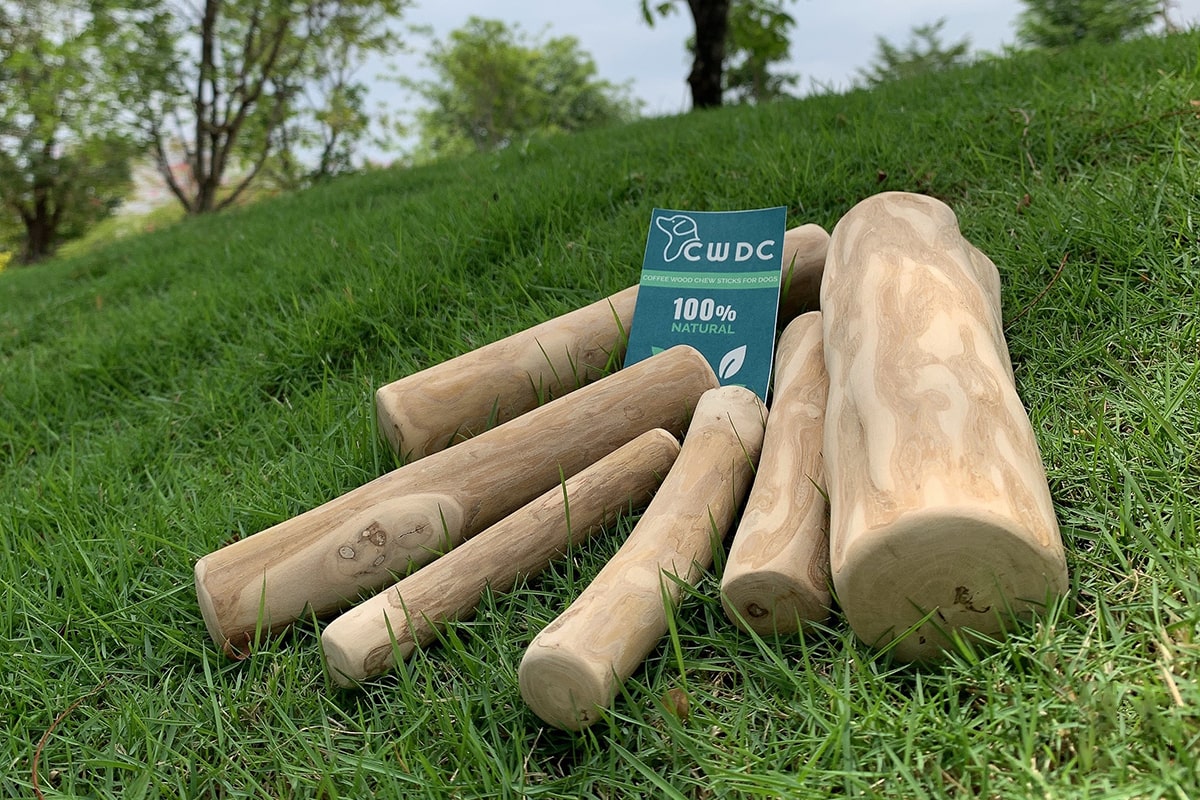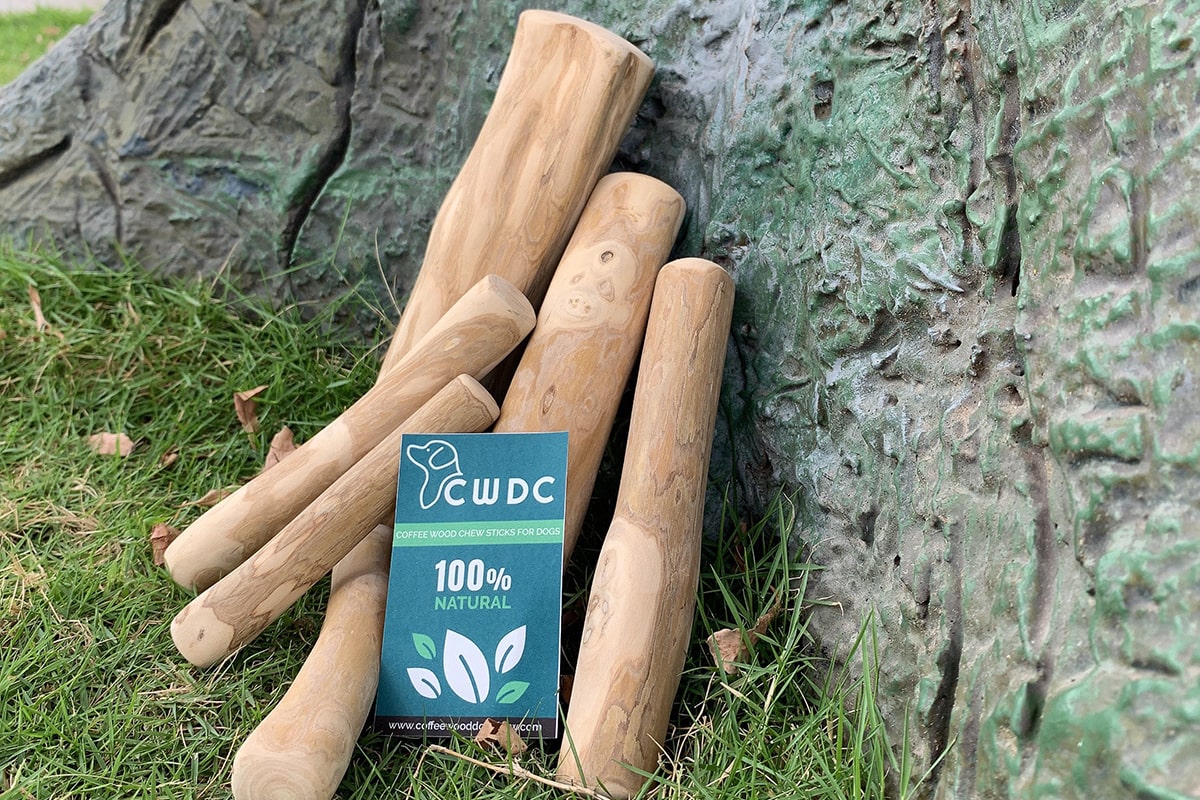When choosing the best rope toys for your dog, safety should always be a top priority—especially for items that go directly into your dog’s mouth. Rope toys are a popular option for chewing, tugging, and interactive play, but not all ropes are created equal. Two major categories dominate the market: natural coconut coir rope and synthetic rope made from nylon, polyester, or other plastics. In this article, we compare the two to help you decide which is safer, healthier, and more environmentally friendly for your pup.
1. What Is Coconut Coir Rope?
Coconut coir rope is made from the fibrous husk of mature coconuts, a natural byproduct of coconut farming. The fibers are harvested, cleaned, and twisted into rope without the use of harsh chemicals or synthetic additives. It’s biodegradable, tough yet flexible, and has been used traditionally in various industries, including agriculture and marine applications.
2. What Is Synthetic Rope?
Synthetic ropes are manufactured using materials like nylon, polypropylene, polyester, or other petrochemical-based plastics. These ropes are engineered to be durable, weather-resistant, and cost-effective. While commonly found in many store-bought pet toys, synthetic ropes may include dyes, coatings, and plasticizers that aren’t always pet-safe.
3. Safety: Which One Is Better for Your Dog’s Health?
✅ Coconut Coir Rope
- Non-toxic & natural: Made without artificial chemicals or plasticizers
- Digestible fibers: If small pieces are ingested, they usually pass safely through the digestive tract
- Mild on gums: The coarse texture gently scrubs teeth and stimulates gums, improving oral health
- No artificial dyes: Free from coloring agents that could cause allergic reactions or toxicity
⚠️ Synthetic Rope
- Risk of ingestion: Frayed synthetic fibers can cause intestinal blockages if swallowed
- May contain toxic additives: Some ropes are dyed or coated with non-food-grade chemicals
- Can be abrasive: Rough, plastic-based ropes may damage teeth or gums over time
- Not digestible: Synthetic fibers remain in the body longer and can pose choking or digestive risks
In short, coconut coir rope is significantly safer in terms of what your dog may chew or accidentally ingest.
4. Durability: How Do They Compare?
Coconut coir rope is durable enough for light to moderate chewers, making it ideal for casual tug-of-war or supervised chew sessions. It is designed to wear down gradually and safely, breaking into natural fibers over time. However, it may not stand up to heavy power chewers for extended periods.
Synthetic ropes are typically stronger and more resistant to tearing, which is why they’re commonly used for aggressive chewers. But this durability comes at a cost: when they do fray, they often leave behind sharp strands or microplastics.
Verdict: If you need maximum toughness, synthetic rope might last longer—but at the potential expense of safety. For a safer, more natural chew experience, coconut coir is the better choice.
5. Environmental Impact: Natural vs. Plastic
Coconut coir rope is completely biodegradable and compostable, meaning it breaks down naturally without polluting the environment. It is sourced from renewable coconut farming byproducts, making it a low-impact, sustainable material. Using coir helps reduce agricultural waste and supports rural economies in coconut-producing countries.
In contrast, synthetic rope is made from non-renewable resources, primarily petroleum. It’s not biodegradable, contributes to plastic waste, and often ends up in landfills or oceans, posing a danger to wildlife.
Verdict: Coconut coir rope is the clear winner for sustainability and eco-conscious pet care.
6. Maintenance & Cleanliness
Coconut coir rope can absorb moisture, so it should be stored in a dry area and not left outdoors for long periods. It’s also best used under supervision to prevent overly aggressive shredding. However, its natural antibacterial properties help reduce odor and bacterial buildup.
Synthetic ropes are more water-resistant and easier to rinse off, but they may harbor bacteria in hidden fibers, especially if used frequently outdoors or with food-based play.
7. Ideal Use Cases
Coconut Coir Rope: Ideal for puppies, small-to-medium dogs, light chewers, eco-conscious homes, and dogs with sensitivities
Synthetic Rope: Suitable for heavy chewers, outdoor use, and pet owners focused on high-durability gear
Conclusion: Which Is Safer?
When weighing safety, health, and environmental impact, coconut coir rope emerges as the safer and more responsible option for most dogs. While synthetic rope may offer longer durability for tough chewers, its risks—from chemical additives to indigestible fibers—make it a less ideal choice for health-conscious pet owners.
Coconut coir rope, on the other hand, is a natural, digestible, and earth-friendly alternative that still provides satisfying chew time, dental benefits, and fun interactive play. If your priority is your dog’s wellbeing and a cleaner planet, switching to coconut coir rope is a smart, sustainable move.
Related Posts:
- Are coffee wood chews safe for dogs ? A Comprehensive Look
- Why Do Dogs Chew on Furniture, Shoes, and Other Household Items?
- Hemp Rope and Coffee Wood: The Perfect Combination for Natural Dog Chews
- Hemp Rope Ball for Dogs: A Fun & Safe Chew Toy Option
- Coconut Coir Bones vs. Traditional Dog Chews: Which Is Better?
- Identifying Safe and Unsafe Wood Chews for Your Dog









